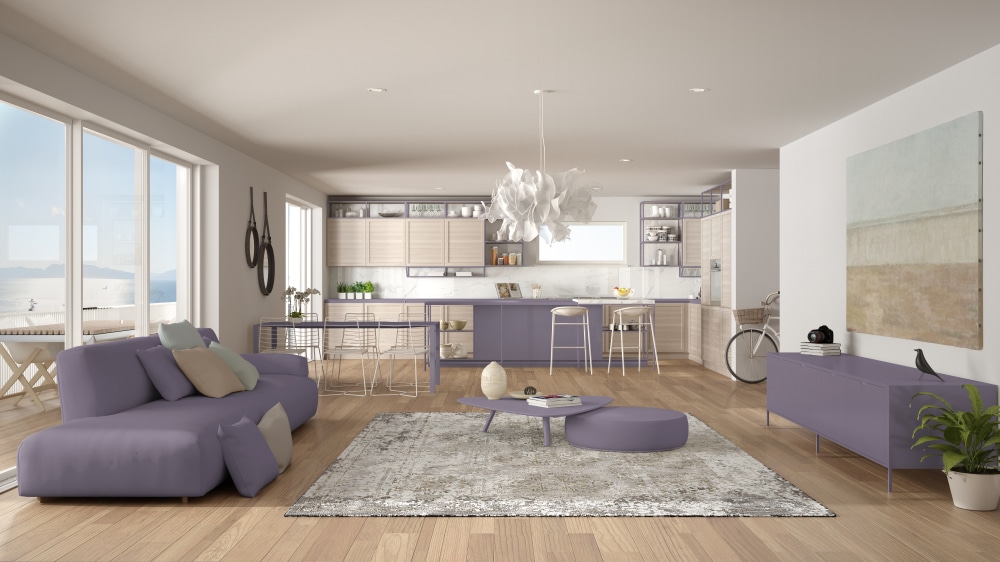Open Floor Plan: Not Everyone’s a Fan
What if you want to find a traditional house that isn’t one big room?
Q: I know this isn’t your usual type of question, but when on earth are people going to stop tearing down supporting walls in their houses in the quest for an open floor plan? This trend turns a house into public space, robbing anybody of any privacy. Worse, it shrinks kitchens by taking away a whole wall of cupboard space, makes it impossible to find surfaces on which to put furniture and hang pictures and wastes energy because large open spaces are harder to heat and cool.
Plus because it’s so structurally costly, houses with open floor plans are more expensive. It leaves very few desirable houses on the market to buy. Where can I find a more traditional house?
A: You can thank the home renovation shows on HGTV for the open floor plan trend taking off. It feels as though every show we watch features an older home that gets taken down to the studs, with all interior walls removed to make each home feel as big as possible.
Do open floor plans increase the costs of living in a home? Perhaps. They can be a lot louder, since there are no walls to block sound travel. While you’ve got some strong thoughts on open floor plans in homes, we do know that many home buyers prefer open space plans homes.
Generally speaking, open floor plans usually make the kitchen, dining and living areas one big open space. Traditional homes built 50+ years ago would have had an enclosed kitchen, a well-defined dining room and a separate living room. One hundred years ago, you might have seen these same spaces closed off by doors to keep the smell and noises of the kitchen away from the dining space.
But life is a lot more casual now, and as you’ve noticed, most people don’t have butlers or a staff to cook and clean. Parents want to cook while helping their kids do homework, so having an island where kids can sit with their paperwork while someone is chopping vegetables works in a lot of families.
Tearing down interior walls willy-nillly is never a good idea. If you want to renovate your home, the smart thing to do is hire a structural engineer to make sure a kitchen wall isn’t holding up the entire second floor. If you don’t pay attention to structure, the whole house could crash down on you.
While you may like cupboard and counter space, many others might prefer to have a kitchen open to a dining or living area. Many families live differently today, eating take-out food or just eating out. If they have guests over, they put out paper plates rather than use china. Younger families don’t want to take care of a lot of stuff, and live minimally. That limits the need for extra storage space.
You mentioned that open spaces are harder and more expensive to heat and cool. Maybe, but we have heard that open spaces can be harder to heal and cool evenly. In smaller spaces, traditional heating and cooling systems can be adjusted to keep a constant temperature.
With larger spaces that have big windows, there could be greater temperature variation. However, modern heating and cooling systems can help keep the temperature consistent throughout the home. Some new or newly-renovated homes now include both standard heating systems with additional heating systems in the floor or ceiling. Leveraging zones and newer technologies will help keep the home evenly cooled.
But your point about cost is well taken. Some of these systems and designs might cost more to install and run. Or, they may be less expensive because they’re smarter about how they heat and cool the space.
But let’s go back to where we started: You just don’t like this style of house. Your tastes run more traditional. Unfortunately, the overall market disagrees. Almost all homes being built today include some sort of open floor plan.
To find a more traditional home in an admittedly tight market, look in older, more established neighborhoods. And, work with an agent who specializes in finding homes in need of renovation. Perhaps you can make over a home to suit yourselves?
©2024 by Ilyce Glink and Samuel J. Tamkin. Distributed by Tribune Content Agency. A1635







Leave A Comment